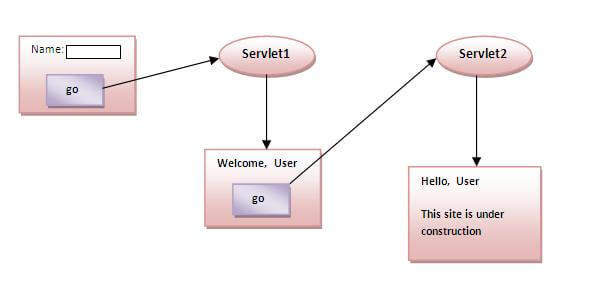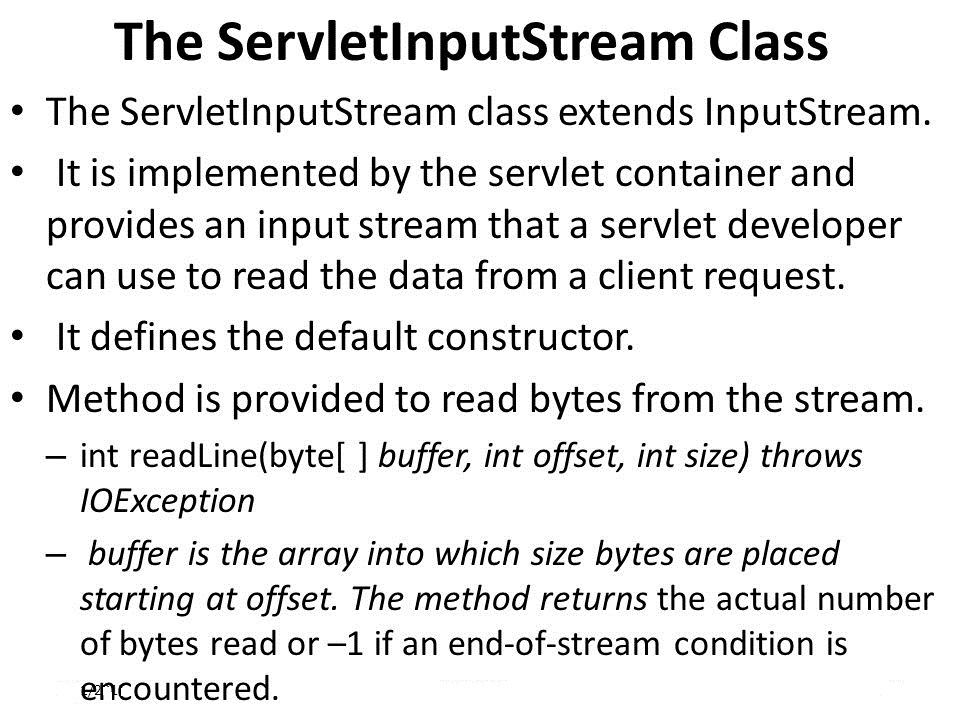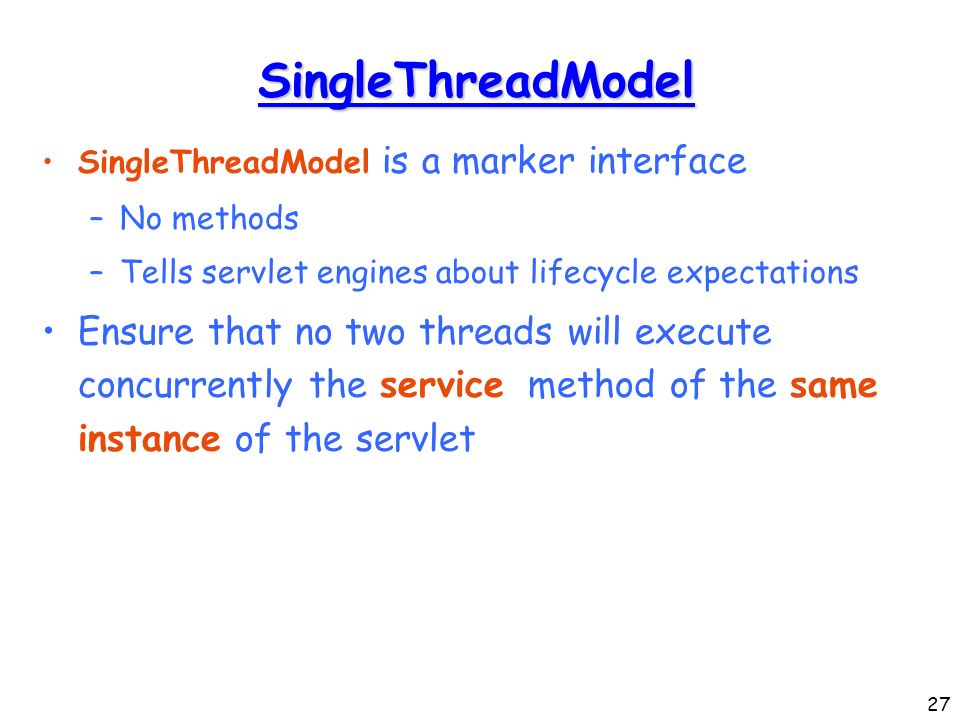A cookie is a small piece of information that is persisted between the multiple client requests.
A cookie has a name, a single value, and optional attributes such as a comment, path and domain qualifiers, a maximum age, and a version number.
How Cookie works
By default, each request is considered as a new request. In cookies technique, we add cookie with response from the servlet. So cookie is stored in the cache of the browser. After that if request is sent by the user, cookie is added with request by default. Thus, we recognize the user as the old user.
Types of Cookie
There are 2 types of cookies in servlets.
- Non-persistent cookie
- Persistent cookie
Non-persistent cookie
It is valid for single session only. It is removed each time when user closes the browser.
Persistent cookie
It is valid for multiple session . It is not removed each time when user closes the browser. It is removed only if user logout or signout.
Advantage of Cookies
- Simplest technique of maintaining the state.
- Cookies are maintained at client side.
Disadvantage of Cookies
- It will not work if cookie is disabled from the browser.
- Only textual information can be set in Cookie object.
Note: Gmail uses cookie technique for login. If you disable the cookie, gmail won’t work.
Cookie class
javax.servlet.http.Cookie class provides the functionality of using cookies. It provides a lot of useful methods for cookies.
Constructor of Cookie class
| Constructor | Description |
|---|---|
| Cookie() | constructs a cookie. |
| Cookie(String name, String value) | constructs a cookie with a specified name and value. |
Useful Methods of Cookie class
There are given some commonly used methods of the Cookie class.
| Method | Description |
|---|---|
| public void setMaxAge(int expiry) | Sets the maximum age of the cookie in seconds. |
| public String getName() | Returns the name of the cookie. The name cannot be changed after creation. |
| public String getValue() | Returns the value of the cookie. |
| public void setName(String name) | changes the name of the cookie. |
| public void setValue(String value) | changes the value of the cookie. |
Other methods required for using Cookies
For adding cookie or getting the value from the cookie, we need some methods provided by other interfaces. They are:
|
How to create Cookie?
Let’s see the simple code to create cookie.
Cookie ck=new Cookie("user","sonoo jaiswal");//creating cookie object
response.addCookie(ck);//adding cookie in the response
How to delete Cookie?
Let’s see the simple code to delete cookie. It is mainly used to logout or signout the user.
Cookie ck=new Cookie("user","");//deleting value of cookie
ck.setMaxAge(0);//changing the maximum age to 0 seconds
response.addCookie(ck);//adding cookie in the response
How to get Cookies?
Let’s see the simple code to get all the cookies.
Cookie ck[]=request.getCookies();
for(int i=0;i<ck.length;i++){
out.print("
"+ck[i].getName()+" "+ck[i].getValue());//printing name and value of cookie
}
Simple example of Servlet Cookies
In this example, we are storing the name of the user in the cookie object and accessing it in another servlet. As we know well that session corresponds to the particular user. So if you access it from too many browsers with different values, you will get the different value.
index.html
FirstServlet.java
import java.io.*;
import javax.servlet.*;
import javax.servlet.http.*;
public class FirstServlet extends HttpServlet {
public void doPost(HttpServletRequest request, HttpServletResponse response){
try{
response.setContentType("text/html");
PrintWriter out = response.getWriter();
String n=request.getParameter("userName");
out.print("Welcome "+n);
Cookie ck=new Cookie("uname",n);//creating cookie object
response.addCookie(ck);//adding cookie in the response
//creating submit button
out.print("");
out.print("");
out.print("");
out.close();
}catch(Exception e){System.out.println(e);}
}
}
SecondServlet.java
import java.io.*;
import javax.servlet.*;
import javax.servlet.http.*;
public class SecondServlet extends HttpServlet {
public void doPost(HttpServletRequest request, HttpServletResponse response){
try{
response.setContentType("text/html");
PrintWriter out = response.getWriter();
Cookie ck[]=request.getCookies();
out.print("Hello "+ck[0].getValue());
out.close();
}catch(Exception e){System.out.println(e);}
}
}
web.xml
s1 FirstServlet s1 /servlet1 s2 SecondServlet s2 /servlet2
Output












Leave A Comment